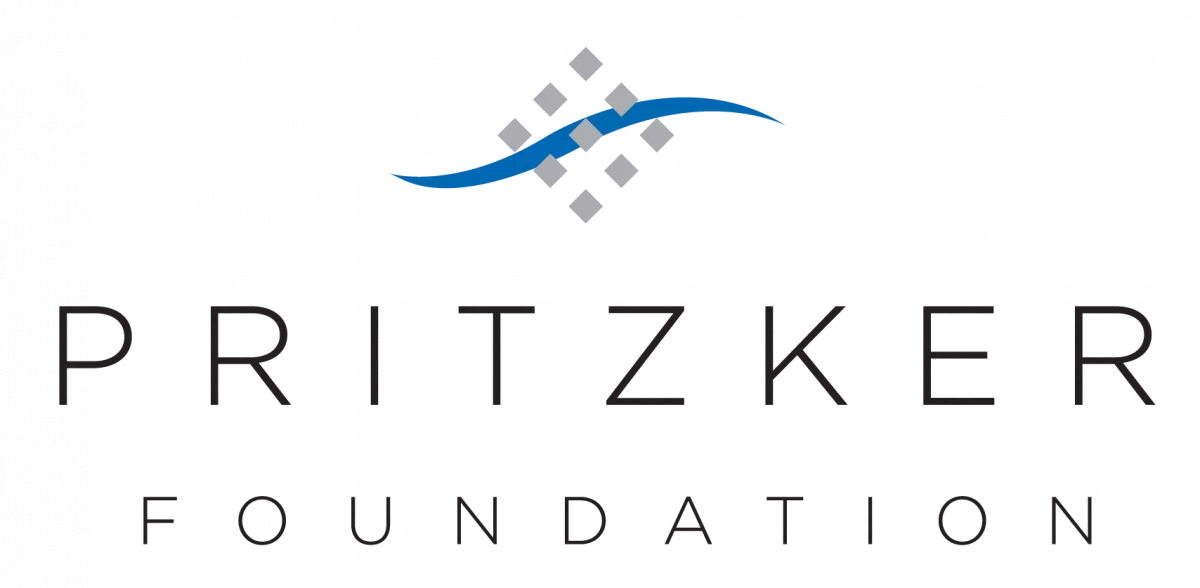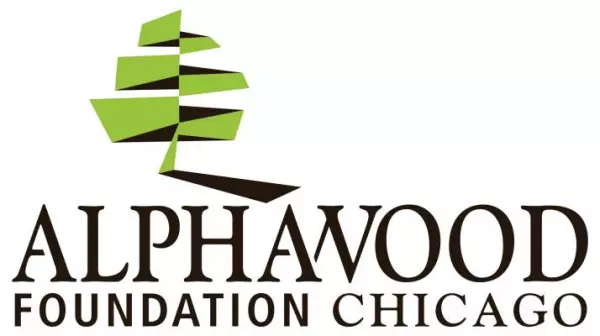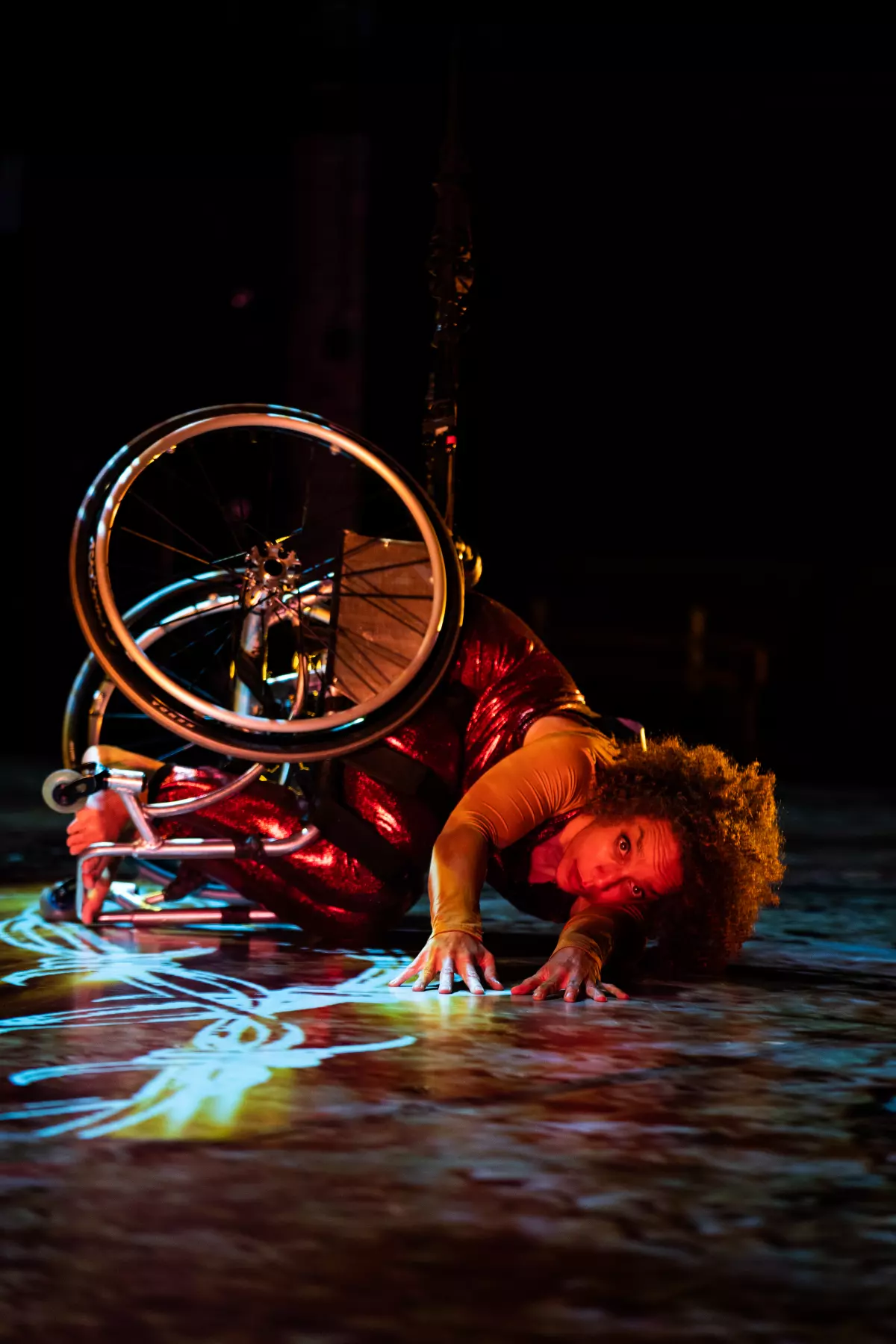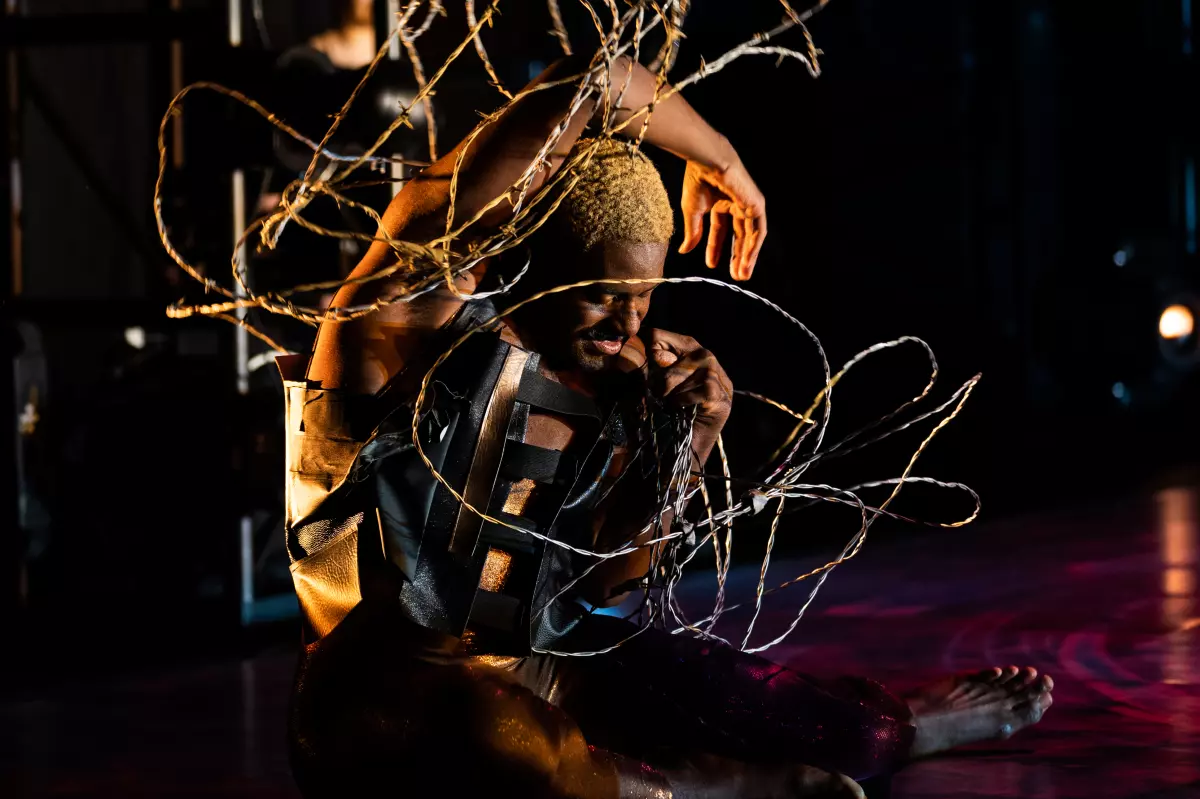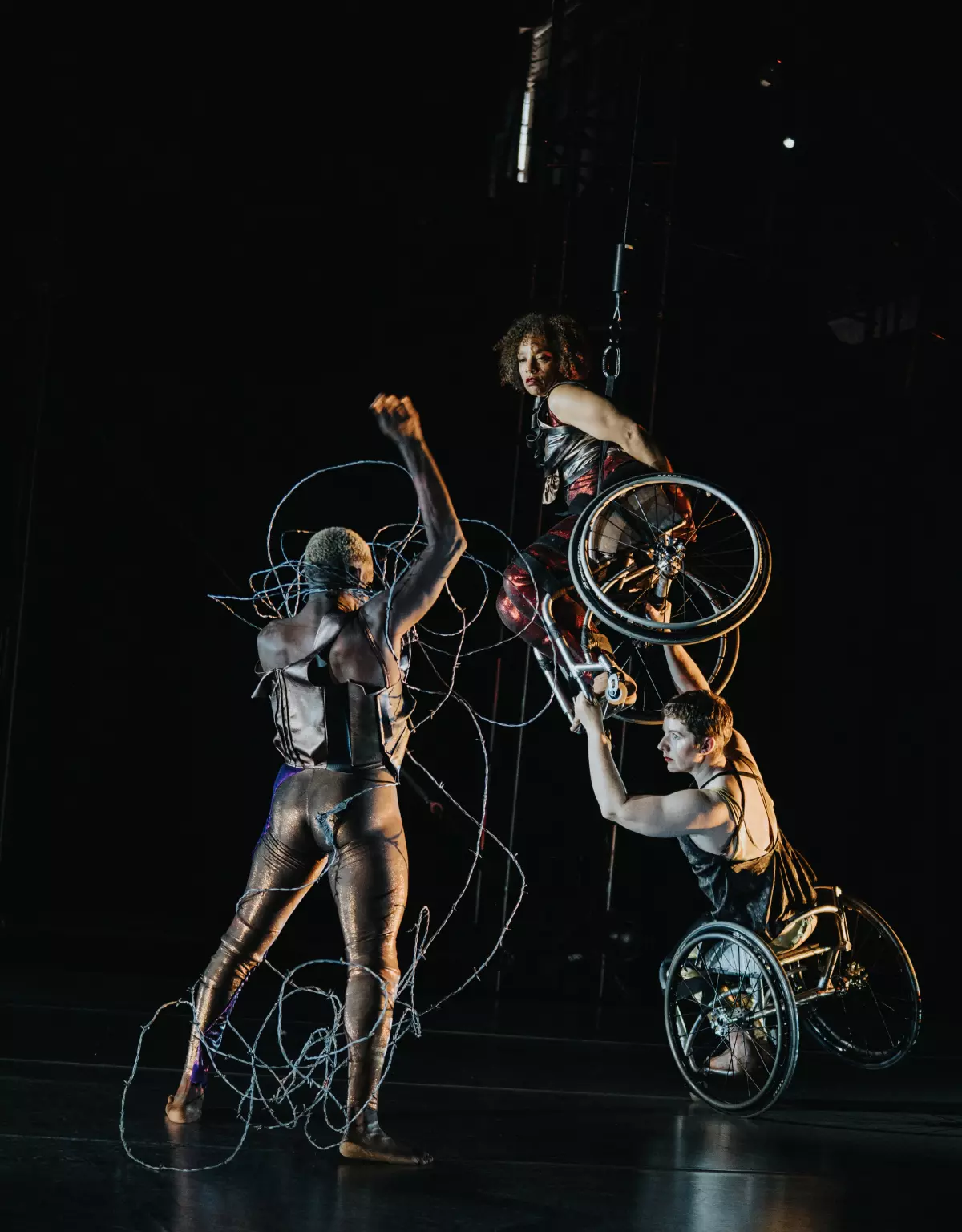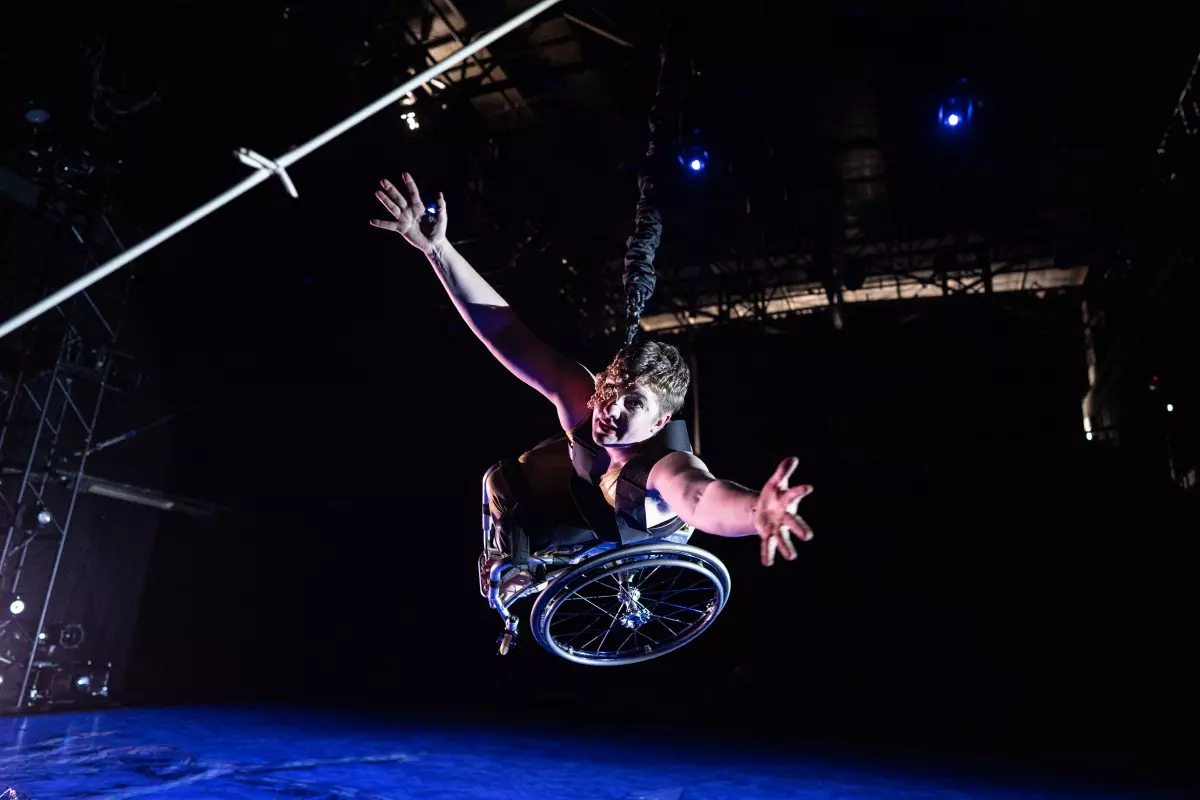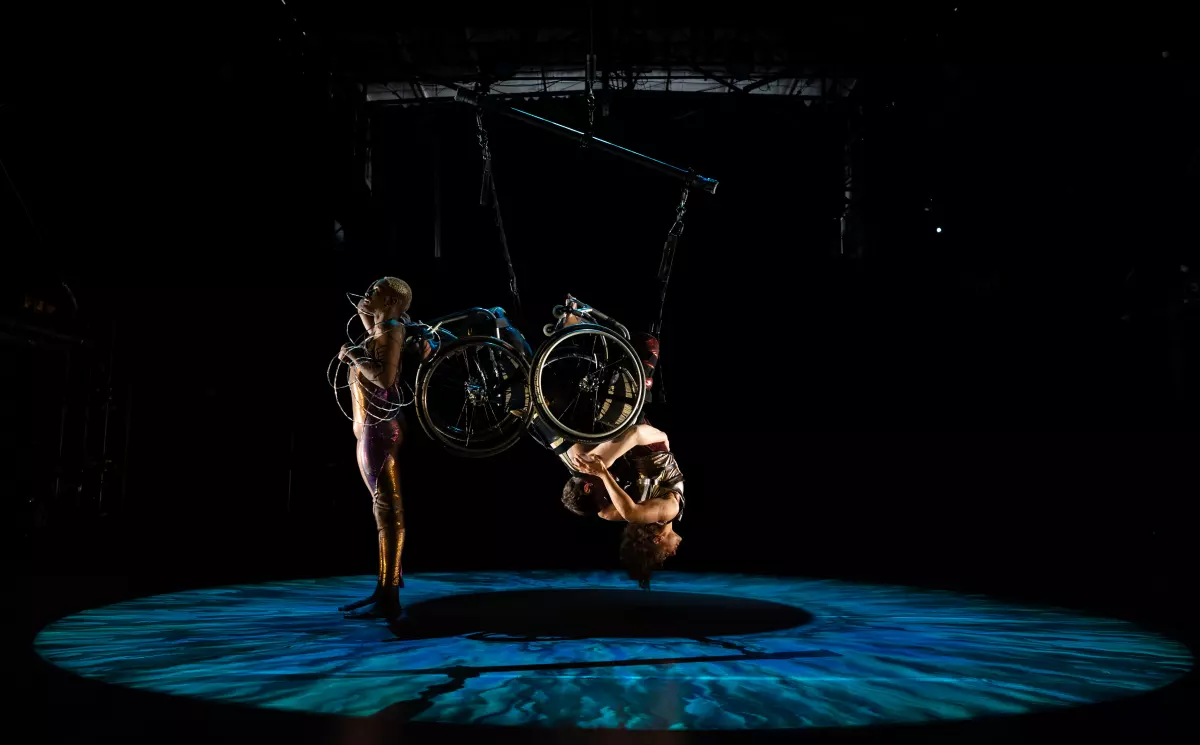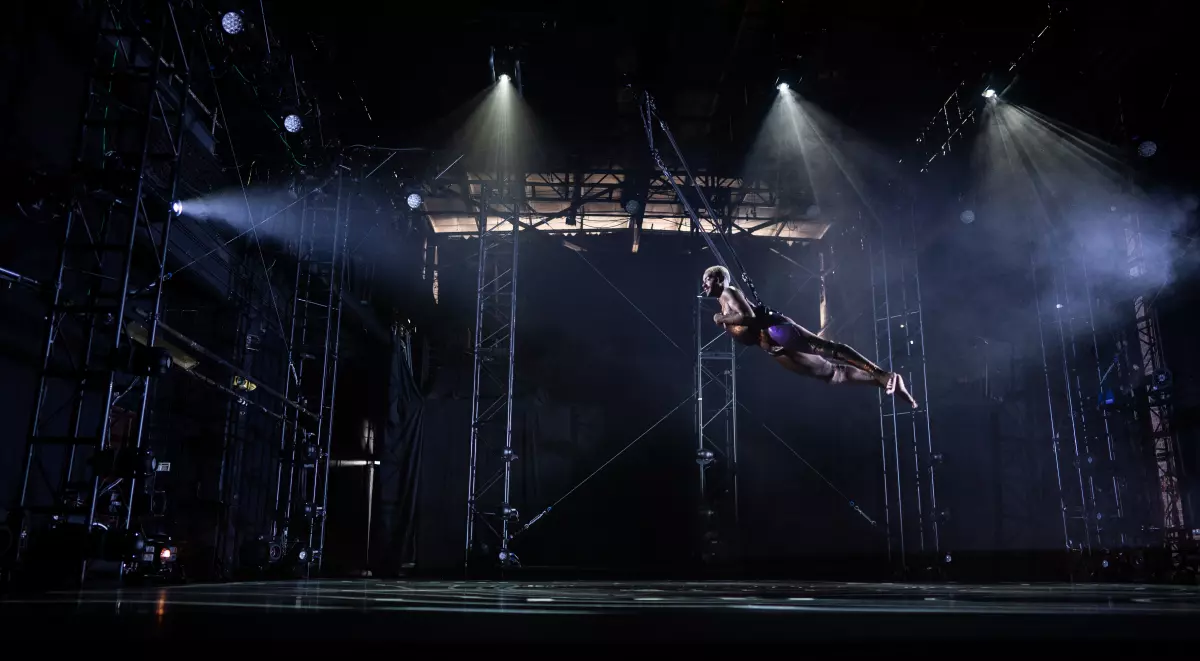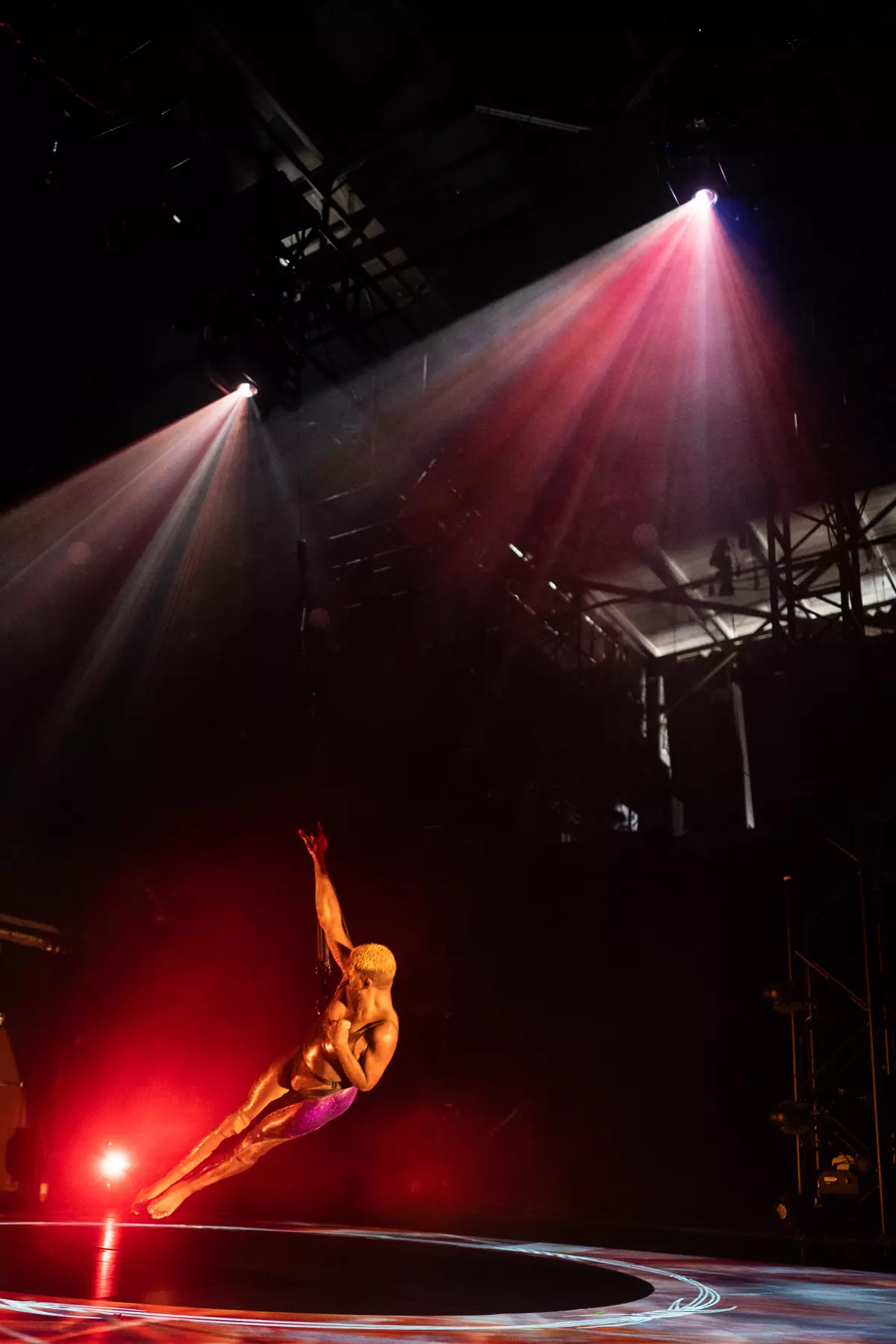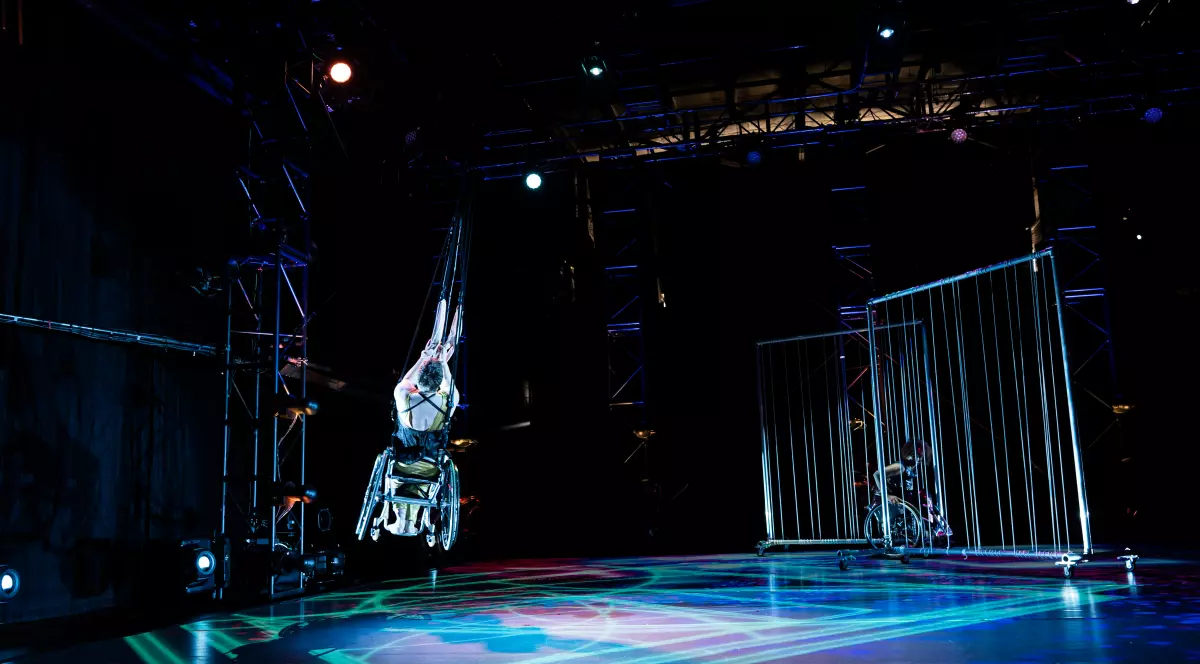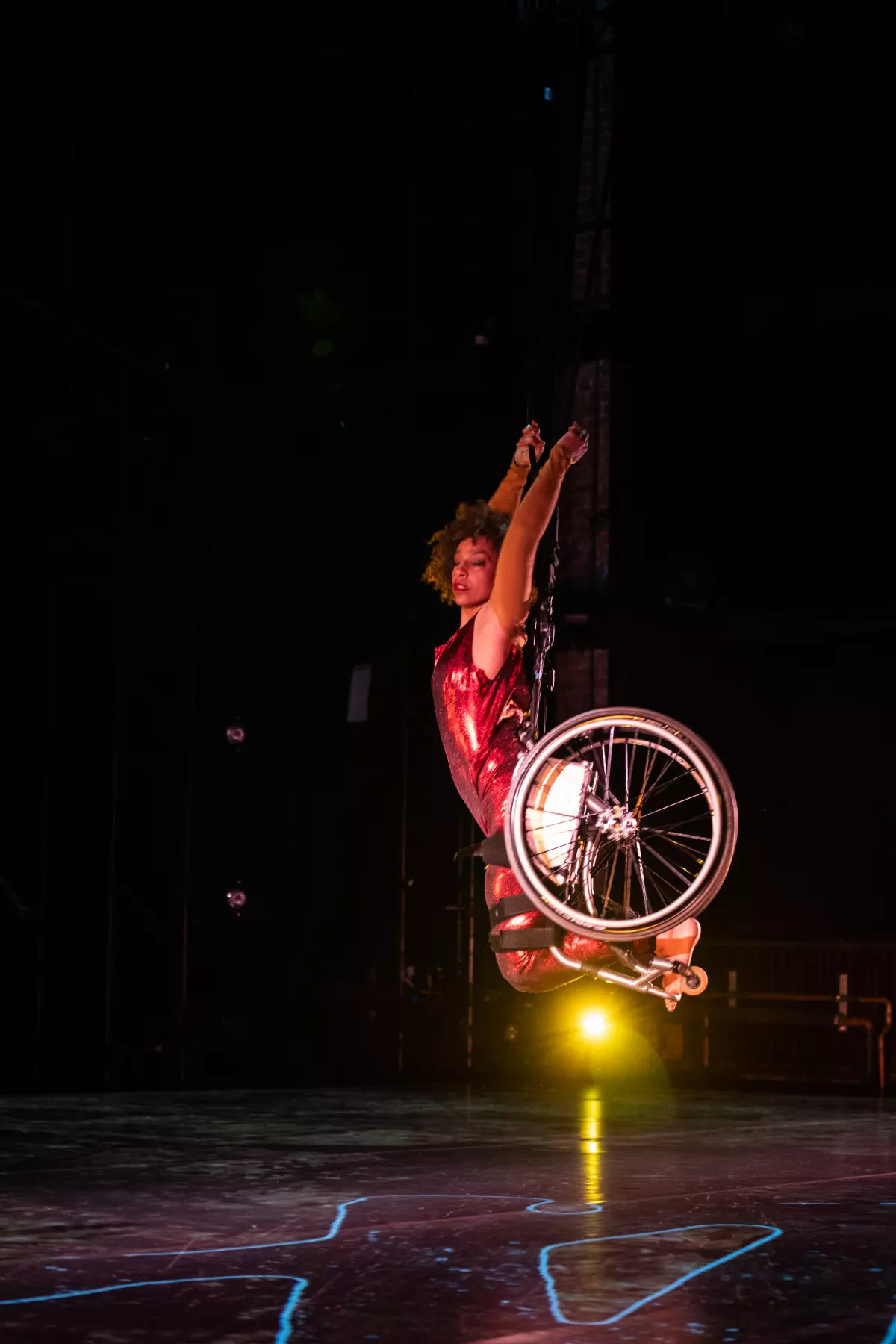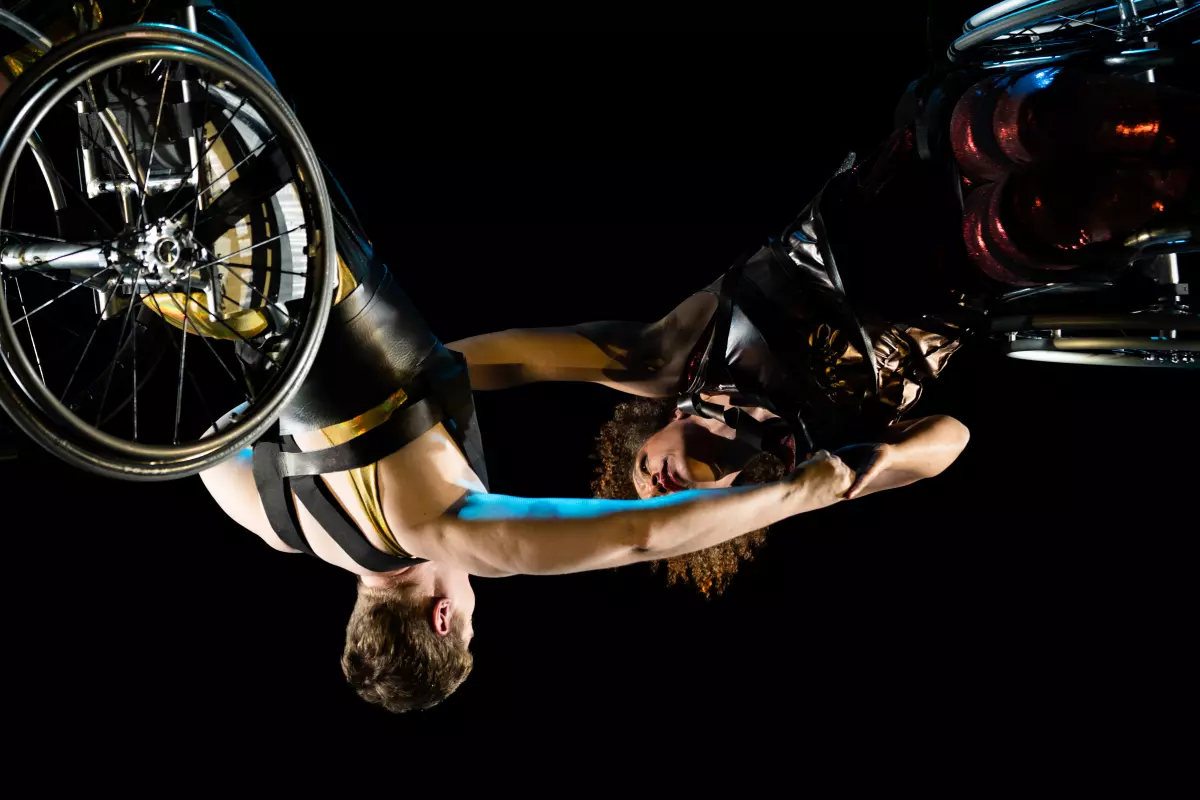Kinetic Light, Wired
May 05, 20228:00 pm
May 06, 20228:00 pm
May 07, 20228:00 pm
May 08, 20222:00 pm
Content Advisory: Wired honors histories of race, gender, and disability in America through an exploration of barbed wire. At times, the performance includes depictions of violence, as well as disability-based and racial injustice. The audio description of this program contains references to sexual violence, medical trauma, disability-based and racial injustice, and other potentially sensitive topics. It may also include profanity.
About the Performance
Wired is an immense and intimate experience that traces the fine line between “us” and “them” through aerial and contemporary dance and the metaphoric use of barbed wire. The dancers of Wired spin and soar together in this meditation in sound, light, and movement on the gendered, racial, and disability stories of barbed wire in the United States, showing how this material shapes common understandings of who belongs. Barbed wire is designed as a material for containment. It is used, time and again, to limit individual and community movements and delineate boundaries as large as a nation state and as small as a personal fence. In Wired, this fraught material comes to highlight not only danger and contradiction, but also beauty and interconnection.
To create Wired, the artists of Kinetic Light—Alice Sheppard, Laurel Lawson, Jerron Herman, and Michael Maag—and their collaborators—composers Ailís Ní Ríain and LeahAnn Mitchell and scenic designer Josephine Shokrian—defy both gravity and assumptions about what dance can be. The artists of Kinetic Light see interdependence as a political position as well as an approach to making dance from a disability aesthetic: in which disability is a powerful creative and cultural force, and the many ways of accessing the performance are the art itself.
This project was organized by Tara Aisha Willis; Curator, Performance and Public Practice; with Nolan Jimbo, Marjorie Susman Curatorial Fellow. Wired was commissioned by The Shed (NYC) as part of Open Call. This program was produced with guidance from MCA Advisory Partners Bodies of Work. Their contributions have shaped the development and implementation of this project.
Accessibility
ASL interpretation and audio description are available for all shows. There is no spoken dialogue in Wired. AD is available through Kinetic Light’s app, Audimance. More information will be provided to ticketholders by email in advance. Orientation to and demonstration of the app will be available in the lobby prior to all shows, along with a tactile exhibit that serves as an introduction to the Wired set, props, costumes, and theatrical elements.
Wired content and artistry remains the same for all performances. The show shares many aspects of MCA’s Relaxed Performances. Audience members are welcome to exit and reenter.
Light haze is present in certain sections. There are no strobe lighting effects. Quiet spaces and stimulation kits are available for all performances.
The show is livestreamed on Saturday with ASL, and includes one channel being audio described. Friday’s and Sunday’s performances offer an alternative lighting design.
About the Artists
Kinetic Light is an internationally recognized disability arts ensemble featuring Alice Sheppard, Jerron Herman, Laurel Lawson, and Michael Maag. Working in the disciplines of art, technology, design, and dance, Kinetic Light creates, performs, and teaches at the nexus of access, queerness, disability, dance, and race. In the company’s work, intersectional disability is an aesthetic, a culture, and an essential element of artistry. Access is integral to the company’s work and is part of the art itself.
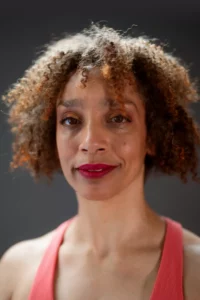
Photo: Robbie Sweeny
Alice Sheppard is the founder and artistic director of Kinetic Light, as well as a choreographer and dancer in the company.
Sheppard studied ballet and modern dance with Kitty Lunn and made her debut with Infinity Dance Theater. After an apprenticeship, Sheppard joined AXIS Dance Company, where she toured and taught in the company’s education and outreach programs. Since becoming an independent artist, Sheppard has danced in projects with Ballet Cymru, GDance, and Marc Brew Company in the United Kingdom, and Full Radius Dance, Marjani Forté-Saunders, MBDance, Infinity Dance Theater, and Steve Paxton in the United States. Her choreography has been commissioned by Full Radius Dance (2019), CRIPSiE (2016), and MOMENTA (2019, 2016, and 2014).
As an emerging and Bessie award–winning choreographer, Sheppard creates movement that challenges conventional understandings of disabled and dancing bodies. Engaging disability arts, culture, and history, she is intrigued by the intersections of disability, gender, and race. In addition to performance and choreography, Sheppard is a sought-after speaker and has lectured on topics related to disability arts, race, and dance. Her writing has appeared in The New York Times and in academic journals. She is a 2020 Disability Futures Fellow, a joint initiative of the Andrew W. Mellon Foundation and the Ford Foundation, respectively.
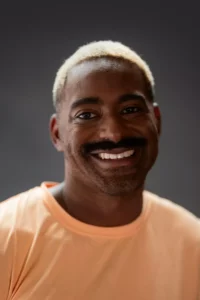
Photo: Robbie Sweeny
Jerron Herman (dancer and choreographic collaborator) is an interdisciplinary artist who creates through dance, text, and visual storytelling. From 2011 to 2019, he was a principal member of Heidi Latsky Dance and also served as their development director from 2016 to 2019. Herman was a finalist for the inaugural Apothetae and Lark Play Development Lab Fellowship and was also nominated for a Fellowship in Dance from United States Artists. His latest works include Breaking and Entering with Molly Joyce at Danspace Project; Many Ways to Raise a Fist for the 29th Anniversary of the ADA at the the Whitney Museum; and Relative—a crip dance party—for the disabled-led festival I Wanna Be With You Everywhere at Performance Space New York. He studied at Tisch School of the Arts and graduated from The King’s College. The New York Times has called him “the inexhaustible Mr. Herman.”
Herman is also a writer, moderator, and advocate for the arts; he has served on the Board of Trustees at Dance/USA since 2017. He is a 2020 Disability Futures Fellow, a joint initiative of the Andrew W. Mellon Foundation and Ford Foundation, respectively.
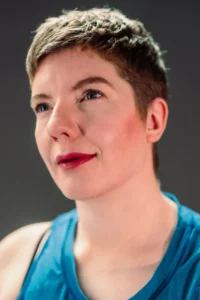
Photo: Robbie Sweeny
Laurel Lawson (choreographic collaborator, dancer, designer, and engineer) is Kinetic Light’s primary costume and makeup designer. She also contributes other technical and production design, and designs the wheelchairs that she and Alice Sheppard use in performance. For the chairs used in the development of Wired, Lawson collaborated with Paul Schulte, lead engineer for Top End. She is also the product designer and lead for both access and technology initiatives, including Audimance, the company’s app that revolutionizes audio description for nonvisual audiences, and Access ALLways, the hospitality and experience paradigm and collected practices for holistic, disabled-led, equitable accessibility.
Lawson began her professional dance career with Atlanta’s Full Radius Dance in 2004. In her independent and transdisciplinary practice, housed at Rose Tree Productions, her work includes both traditional choreography and novel ways of extending and creating art through technology and design in the creation of worlds and products experienced, installed, embodied, or virtual.
Lawson’s choreography is marked by intensive partnering and grounded technique. Bringing the nuance of disabled artistry, she creates work for nondisabled, disabled, and physically integrated companies. She often weaves together abstract and concrete themes with overarching mythological inspiration, with attention to engaging, innovative, and immersive audience experience. Her work has been recognized with a 2019–20 Dance/USA Artist Fellowship, made possible with funding from the Doris Duke Charitable Foundation.
Beyond the studio, Lawson is the CTO and cofounder of CyCore Systems, a boutique engineering consultancy which specializes in solving novel, multi-realm problems of all sizes for a global clientele. A noted public speaker and teacher, she speaks on a range of technical topics as well as on leadership and executive practice, accessibility, culture, and equity, and how to cultivate creativity and drive innovation.
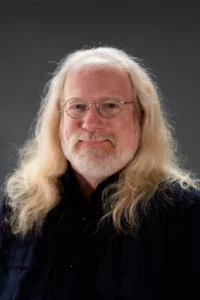
Photo: Robbie Sweeny
Michael Maag (scenographer) is an award-winning designer of lighting, video, and projection for theater, dance, musicals, opera, and planetariums. He sculpts with light and shadow to create lighting environments that tell a story, believing that lighting in support of the performance is the key to unlocking audiences’ emotions. Maag has built custom optics for projections in theaters, museums, and planetariums; he also designs and builds electronics and lighting for costumes and scenery.
Maag is passionate about bringing the perspective of a disabled artist to technical theater and design. He is currently the resident lighting designer at the Oregon Shakespeare Festival. His designs have been seen on the Festival’s stages for the last 20 years, as well as at theaters across the country. He has spoken at several theater and architecture conferences on the importance of access for disabled artists in the technical theater field.
Support
Collaborators
For a list of all Wired collaborators and funders, visit kineticlight.org/wired.
The engagement model for Wired was developed with support from the New Works Initiative, with lead support provided by Elizabeth A. Liebman. The New Works Initiative puts the creative process at the heart of the MCA’s relationship with Chicago by supporting the development of new performances and creative projects.
Funding
Lead support for the 2021–22 season of MCA Performance and Public Programs is provided by Elizabeth A. Liebman.
Major support is provided by the Alphawood Foundation and by Julie and Larry Bernstein.
Generous support is provided by Lois and Steve Eisen and The Eisen Family Foundation; Ginger Farley and Bob Shapiro, Martha Struthers Farley and Donald C. Farley, Jr. Family Foundation, N.A., Trustee; Susan Manning and Doug Doetsch; Carol Prins and John Hart/The Jessica Fund; and Anonymous.
Additional generous support is provided by Ms. Shawn M. Donnelley and Dr. Christopher M. Kelly, Cynthia Hunt and Philip Rudolph, Ashlee Jacob, Anne L. Kaplan, Sharon and Lee Oberlander, D. Elizabeth Price and Lou Yecies, and Enact, the MCA’s Performance & Public Programs affinity group.
Generous support is provided by the Chicago Department of Cultural Affairs and Events (DCASE).
The MCA is a proud member of the Museums in the Park and receives major support from the Chicago Park District.
